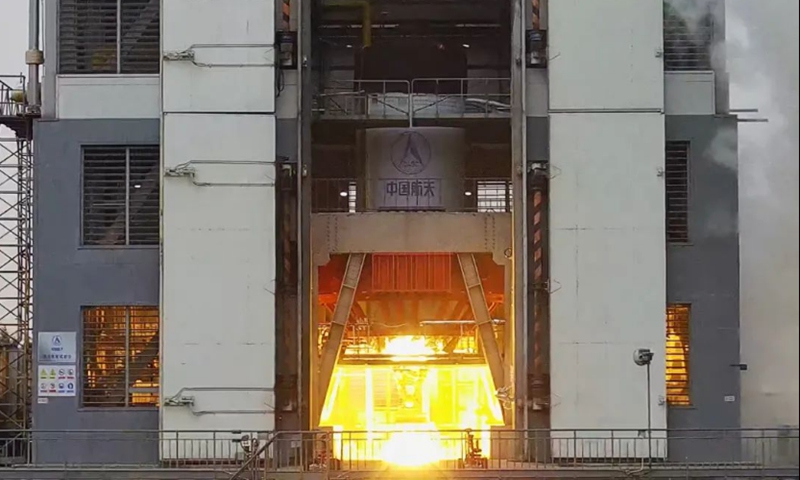
The China Aerospace Science and Technology Corporation (CASC) announced on March 18 that its commercial rocket subsidiary has successfully completed the second-stage propulsion system test for a reusable launch vehicle. Photo:CASC
The China Aerospace Science and Technology Corporation (CASC) announced on Tuesday that its commercial rocket subsidiary has successfully completed the second-stage propulsion system test for a reusable launch vehicle. This marks a significant breakthrough in reusable engine technology for China's commercial space sector.
Reusable engine technology is a key advantage in the global commercial space race, directly impacting the success of rocket recovery. The YF-102V, an open-cycle liquid oxygen-kerosene high-altitude engine, is designed for the second stage of cost-efficient, medium-sized launch vehicles. It features multiple restarts and bidirectional gimbaling capabilities, offering high performance, thrust-to-weight ratio, and cost-effectiveness, enabling low-cost, large-scale access to space with both economic and reliability advantages, according to CASC.
The engine performed flawlessly during testing, successfully demonstrating multiple restarts, ignitions, adaptability to varying inlet parameters, and prolonged pre-cooling capability. After two and a half years of development, the research team overcame over a dozen technical challenges. The engine is now ready for delivery and is expected to undertake its first commercial flight mission this year, according to CASC.
On April 2, 2023, CASC's Sixth Academy provided three 85-ton open-cycle liquid oxygen-kerosene engines as the first-stage propulsion for a commercial launch vehicle's successful maiden flight, setting several domestic records. Currently, liquid oxygen-kerosene and liquid oxygen-methane series engines are being widely adopted by multiple commercial space companies as their primary liquid rocket first and second-stage engines. Moving forward, the team will accelerate development cycles to further expand the use of liquid rocket engine technology in the commercial space sector, the statement said.
In Baoji city, Northwest China's Shaanxi Province, an advanced liquid rocket engine assembly line was established. The facility is expected to begin production by the end of March. Once operational, the facility will produce 300 engines annually, equating to one engine every 1.2 days, helping China seize a leading position in the global commercial space arena, CASC noted.
Global Times




